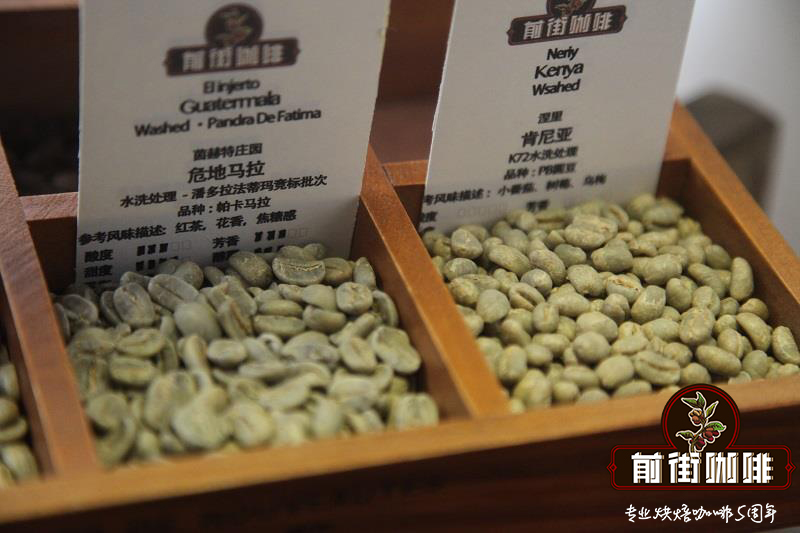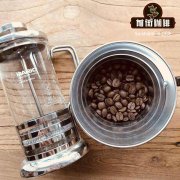Water washed coffee beans sun coffee bean flavor difference why coffee beans are divided into the sun? Washed coffee beans

Professional coffee knowledge exchange more coffee bean information please follow the coffee workshop (Wechat official account cafe_style)
Before you can understand the treatment of raw beans, you must first understand the structure of coffee fruits! The coffee fruit appears green at first, then it changes to red, yellow or orange according to the variety after ripening. It is also known as "coffee cherry" because it looks like a cherry.
Why are coffee beans divided into the sun? Washed coffee beans?
Coffee farmers use the sun treatment method to evaluate the weather permitting. They will spread the screened coffee fruits directly on the main square, let the sun exposure for 2 to 3 weeks, dry the coffee fruits, and then remove the shell of the dried coffee fruits to get coffee beans. This kind of sun-dried beans will adhere to the dried pulp layer and pectin layer, so the coffee beans will be richer in flavor and tend to taste sweet.
The peel and pulp of the screened coffee fruit are removed by the sheller, and the remaining coffee beans containing pectin layer will be fermented for 12 to 24 hours by the symbiotic bacteria of the coffee itself, such as acetic acid bacteria and lactic acid bacteria. These strains will digest the pectin layer outside the coffee beans, and then the acid will seep into the coffee beans, making the flavor of the coffee beans sour, and then treated by water washing, so it is called washing coffee beans.
Advantages and disadvantages of various treatment methods "Water washing method-advantages and disadvantages"
Advantages: the treatment process is very simple, does not need to invest too many tools and equipment, and except for the steps of removing floating beans, it does not need to use water, the cost is low, and it is widely used in areas where water resources are not abundant and less affluent.
Disadvantages:
1. Need enough space exposure, and because the coffee beans must be placed outside, so there are often fallen leaves, insects and other impurities mixed in.
two。 The intensity of sunlight varies every day, so it is difficult to control the dryness of coffee beans.
3. It takes more manpower to turn regularly in order to ensure that mildew and decay will not occur.
4. Remove the peel and pulp: the selected good coffee fruit is put into the pulp sieving machine to remove the exocarp and pulp and leave seeds (coffee beans).
5. Pectin removal by fermentation: put the coffee seeds with a layer of mucous membrane (pectin) in the fermentation tank and use biological treatment to dissolve the pectin by fermentation bacteria.
6. Washing to remove impurities: since the fermentation bacteria will remain on the coffee beans, the beans need to be sent to the washing pool for a second screening (defective beans will float on the surface). This step will consume a lot of clean water in order to clean it up.
7. Coffee bean drying: coffee fruit is usually dried by machine (or sun drying) so that the moisture content is reduced to 10 Murray 14%.
8. Remove endocarp and silver skin: finally, use a sheller to remove the remaining endocarp and silver skin, that is, complete the processing, you can carry out the packaging and transportation of raw beans!
Important Notice :
前街咖啡 FrontStreet Coffee has moved to new addredd:
FrontStreet Coffee Address: 315,Donghua East Road,GuangZhou
Tel:020 38364473
- Prev

Coffee pull basic course Coffee pull introduction tool selection Coffee pull Milk Kettle purchase and grip
Professional coffee knowledge exchange more coffee bean information please follow the coffee workshop (Wechat official account cafe_style) about the origin of coffee flower, in fact, there has never been a very clear literature, only know that at that time in Europe and the United States, coffee pull is in the coffee performance, the display of difficult professional technology, and such innovative skills, the display of difficult technology, greatly
- Next

Why coffee beans are rich in sun flavor and water-washed coffee beans are cleaner? Is it sour in washed coffee?
Professional coffee knowledge exchange more coffee bean information please pay attention to coffee workshop (Wechat official account cafe_style) sun drying and water washing coffee beans have their own advantages and disadvantages, sun processing method is simple, as long as the use of sunlight to dry coffee fruit, but because it is very dependent on several consecutive worship of the sun, so it is limited by the weather, if it rains in a few days, it may make
Related
- What is the meaning of lactic acid fermentation with coffee bean treatment?
- How to judge the state of foam by sound?
- How does the latte pull out the unicorn pattern? Come to get for a little trick to improve the flower pull!
- Will flower pulling affect the taste of the latte?
- Do you know the history of coffee?
- The difference between honey treatment and sun washing what is raisin honey treatment?
- What kind of milk can a novice use to make coffee foam to keep the foam longer? The correct method and skills of milking tutorial sharing
- Why do washed coffee beans taste sour? Flavor characteristics of washed Coffee
- Introduction to the skill of how to practice the size and height of water injection around the circle of hand-brewed coffee
- How do beginners practice coffee flower drawing from scratch?

